Thailand in Winter: Sunshine, Beaches and Clear Skies
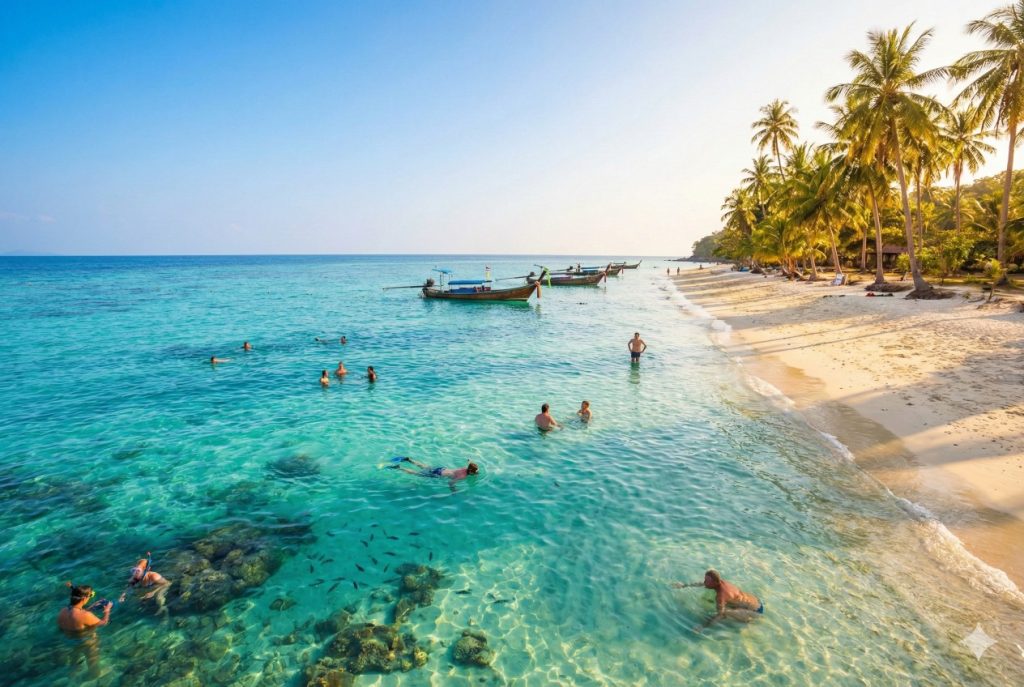
Imagine the ideal conditions for Thailand: no clouds or haze in the sky, plenty of sunshine, turquoise water on the beaches, and mountainous regions filled with people having fun. During the winter months of December through February, Thailand’s high tourist season peaks, with thousands of beachgoers, festival goers, and first-time visitors flocking to the lands. The scenery during winter in Thailand is at its most beautiful. Traveling in Thailand during this time is also the easiest and most enjoyable experience you could ask for; During the days, you can spend time outdoors enjoying the warm sunshine in dry conditions; at night, you are comfortable but still have the ability to be outside. When you think of Thailand, you envision yourself going from island to island in the Andaman Sea, attending lantern-lit festivals in the northern regions, enjoying views of Bangkok from the tops of rooftops, etc. Winter will provide you with the same experience of travel that will forever remain imprinted on your memory. This season is not intended to be used for travel planning or budgeting, but rather to help you understand how this season creates a unique memory for you and why visitors from around the world schedule their trips around this time. In Short Winter in Thailand means dry days, blue skies, and reliable sunshine Thailand’s best beaches and biggest festivals happen during this season It is the peak experience period, offering incredible energy with some trade-offs Why Winter Is the Most Loved Season in Thailand Thailand in winter feels designed for travelers. The season brings conditions that make exploring easy and enjoyable: Clear skies and low humidity Comfortable daytime warmth without extreme heat Cooler evenings perfect for outdoor dining and nightlife Winter in Thailand suits every travel style. Beach destinations thrive, cities feel more walkable, and island travel becomes smoother and more predictable. It is the time when ferry routes, tours, and nightlife operate at full scale. For many travelers, this balance of comfort and activity is why winter is considered Thailand’s most desirable season. You can move easily between beaches, cultural hubs, and nightlife zones without weather disruptions shaping your plans. Best Beaches in Thailand During Winter Thailand’s beaches in winter are at their absolute best. Calm seas, sunny days, and excellent visibility create ideal beach conditions across the country. These are some of the most popular Thailand winter beach destinations: Phuket in Winter Phuket in winter offers postcard-perfect beach days. Calm waters for swimming and boat trips Lively beach towns with restaurants and nightlife Easy access to island tours and day cruises It is a favorite for travelers who want a mix of beaches, nightlife, and convenience. Krabi Winter Weather Krabi winter weather is ideal for scenic beach lovers. Dramatic limestone cliffs and clear waters Excellent conditions for kayaking and snorkeling A relaxed atmosphere compared to larger resort hubs Krabi attracts travelers looking for beauty without constant crowds. Koh Samui Winter Travel Koh Samui winter travel combines comfort with island charm. Resort-friendly beaches and smooth ferry access Balanced mix of nightlife and quiet coastal spots Ideal for couples and slow-paced travelers Koh Samui works well for those who want beach time without overwhelming energy. Things to Do in Thailand in Winter (Beyond Beaches) There are plenty of things to do in Thailand in winter beyond sunbathing. The season supports experiences that depend on dry weather and high visitor energy. Full Moon Party season: Winter is peak time for iconic beach parties and nightlife experiences Chiang Mai lanterns and festivals: Cultural celebrations and glowing night skies define the northern winter experience Bangkok nightlife and rooftop bars: Clear evenings make city views and late nights more enjoyable Thailand winter nightlife thrives during these months, with extended hours, larger crowds, and a festive atmosphere across major destinations. Winter festivals and events add cultural depth, making travel feel immersive rather than routine. Thailand Winter Weather Explained (Month by Month) Thailand weather in winter remains largely consistent, but small monthly differences can shape your experience. Here’s how the season typically unfolds. Thailand December Weather December marks the beginning of peak winter travel. Dry days and low humidity across most regions Comfortable daytime temperatures Clear skies ideal for sightseeing and beach travel December is popular because it balances pleasant weather with festive energy, especially around year-end holidays. Thailand January Weather January is often considered the most comfortable winter month. Stable weather with minimal rainfall Mild mornings and evenings Excellent conditions for outdoor activities This is when Thailand winter weather feels the most reliable, making it a favorite for first-time visitors. Thailand February Weather February signals the transition toward warmer months. Slight increase in daytime heat Continued dry conditions Longer, sunnier days Thailand’s winter temperature by month shows February as warmer but still manageable, especially for beach-focused travel. Is Winter a Good Time to Visit Thailand? Yes, winter is widely regarded as the best season to visit Thailand, but it comes with clear trade-offs. Pros: Consistently pleasant weather Festivals, events, and nightlife at full scale Ideal conditions for beaches, islands, and cities Cons: Higher tourist volumes Increased prices for flights and accommodation Popular destinations feel crowded during holidays If weather reliability and experiences matter more than avoiding crowds, winter is a strong choice. Does It Rain in Thailand During Winter? Rainfall is minimal during winter months. Most regions experience dry, sunny days Occasional short showers may occur, but rarely disrupt plans Thailand sunny weather dominates the season Compared to other times of the year, winter offers the least rain-related uncertainty, especially for beach and island travel. Is Thailand Hot in Winter? Thailand is warm year-round, but winter brings more comfortable conditions. Daytime temperatures are warm, not extreme Evenings feel cooler, especially in northern regions Bangkok in winter is more walkable and less humid In contrast, Chiang Mai winter weather can feel noticeably cooler at night, making it ideal for travelers who prefer milder climates. Winter does not eliminate heat, but it makes Thailand far more comfortable to explore. Is Thailand
Thailand Travel Planning: When to Book and How to Save
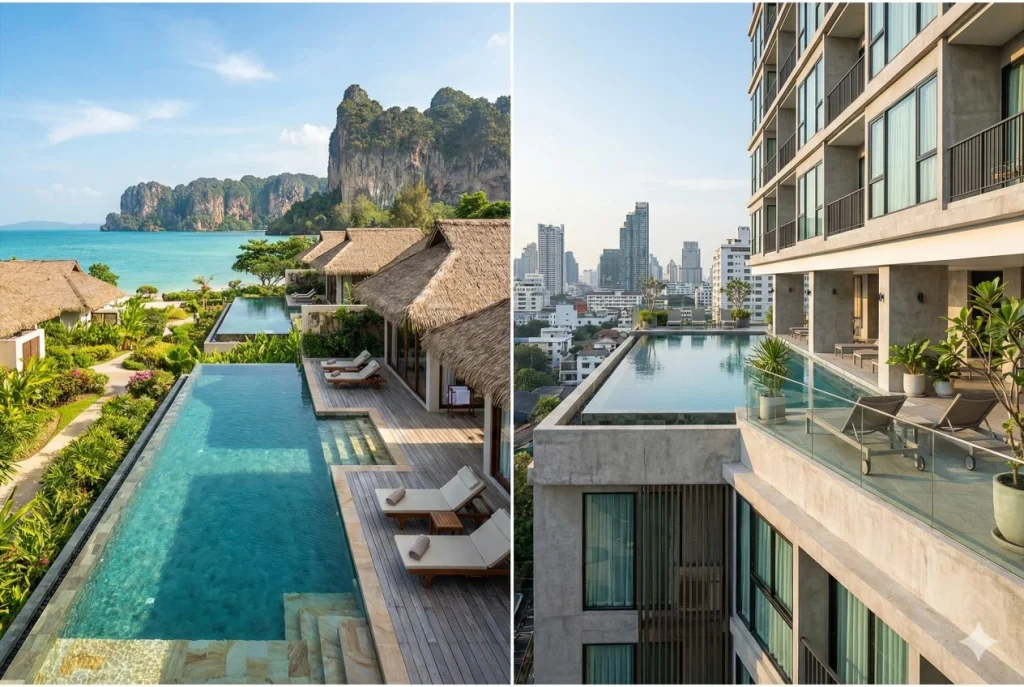
Introduction When people think about going to Thailand, they usually wonder when to get their flight and how not to pay too much. Prices for flights, hotels, and other things can vary by country, but it is even worse in Thailand. First-time visitors may feel overwhelmed by the many different booking timeframes for flights, hotel rooms, and availability. If you wait just a week or two, you may find significant savings in airfare and hotel room rates. This guide will provide clear answers about the most successful timeframes for booking; explain Thailand’s seasons; and show you how proper timing can save you money but still allow you to get the same great travel experience that you would have gotten with a less smart timing approach. If you would like to know when you should book your flight and what is the best way to plan for travel in Thailand, the following section will be a good starting point. In Short Best time to book Thailand flights: 2–4 months in advance Cheapest months to travel: May, June, September Peak season means higher flight and hotel prices Smart timing can save 20–35% on total trip cost Why Timing Matters in Thailand Travel Planning Timing is one of the most important factors in Thailand travel planning because the country follows a clear demand-driven pricing model. Flights, hotels, and even tours adjust prices based on tourist inflow rather than fixed seasonal rates. From a Thailand trip planning perspective, this means: Higher demand = higher prices, especially during winter months. Airlines increase fares as seats fill closer to peak travel dates. Hotels adjust pricing dynamically based on occupancy trends. Any reliable Thailand travel guide will highlight that booking windows directly influence your overall trip cost. Booking too early or too late-without understanding seasonality-often leads to unnecessary spending. Strategic timing allows travelers to access better flight deals, wider hotel choices, and more flexible itineraries. Thailand Seasons Explained (Peak, Shoulder, Off-Season) Understanding Thailand’s travel seasons is essential for cost-efficient planning. Peak Season (November–February) This is Thailand’s most popular travel period due to pleasant weather, low humidity, and minimal rainfall. Highest demand for flights and hotels Ideal for beach destinations and sightseeing Prices rise significantly around Christmas and New Year This period aligns with global holiday travel trends, similar to other popular winter getaways. Travelers planning festive vacations often combine Thailand with other destinations listed in Best Winter Destinations for Christmas & New Year Vacations, making early booking crucial during this window. Shoulder Season (March–April, October) The shoulder season offers a balance between decent weather and moderate pricing. Fewer crowds compared to peak season Slightly lower hotel and flight prices April includes festivals like Songkran, which can cause short-term price spikes For travelers seeking value without extreme weather, this period works well. Off-Season (May–September) Off-season travel in Thailand coincides with the monsoon months. Lowest prices for flights and accommodation Short, heavy rains rather than all-day downpours Best suited for budget-conscious and flexible travelers Thailand off-season travel can be highly rewarding for those comfortable with occasional rain and fewer crowds. Best Time to Book a Thailand Trip (Flights + Hotels) The best time to book a Thailand trip depends on how far in advance you plan and the season you choose. Flights: Ideal booking window: 8–12 weeks before departure Prices typically increase sharply closer to travel dates Peak season flights should be booked even earlier Hotels: Best time to book Thailand hotels: 4–8 weeks in advance Early bookings matter most during peak and festival periods Off-season allows more flexibility with last-minute deals Major festivals, school holidays, and international travel peaks directly affect availability and pricing. Understanding how far in advance to book Thailand travel ensures you lock in reasonable rates without sacrificing choice. Cheapest Month to Travel to Thailand (And Why) The cheapest month to travel to Thailand usually falls within the off-season. Best low-cost months: May June September These months offer: Reduced flight fares Lower hotel prices Fewer tourists at major attractions The trade-off is weather variability. While rainfall increases, it often comes in short bursts rather than constant rain. These months are ideal for: Budget travelers Slow-paced itineraries First-time visitors prioritizing cost over perfect weather Choosing a cheap time to visit Thailand can significantly reduce overall trip expenses while still delivering a fulfilling travel experience. Thailand Trip Cost Breakdown (Flights, Stay, Food, Activities) Understanding the Thailand trip cost in advance helps avoid surprises and allows smarter budget allocation. For Indian travelers, expenses vary widely based on season, booking timing, and travel style. Approximate Thailand trip cost breakdown (per person for 7–10 days): Flights: ₹35,000–₹60,000 Economy return fares from major Indian cities, higher during peak season. Accommodation: Budget hotels/hostels: ₹2,000–₹4,000 per night Mid-range hotels: ₹5,000–₹8,000 per night Luxury resorts: ₹12,000+ per night Local transport: ₹6,000–₹10,000 Includes domestic flights, ferries, trains, and taxis. Food & experiences: ₹10,000–₹20,000 Street food is inexpensive, while tours and island activities add to costs. This Thailand trip cost breakdown shows that accommodation and flights make up the largest share-making booking strategy critical for savings. Is Thailand Cheaper If Booked Early? Whether Thailand is cheaper if booked early depends on what you are booking and when you plan to travel. Early booking works best when: Traveling during peak season (November–February) Booking international flights with limited seat inventory Reserving popular hotels in tourist-heavy areas Waiting can help when: Traveling during off-season or shoulder months Booking hotels with flexible cancellation policies Airlines release short-term promotions Effective Thailand travel booking tips involve tracking prices, understanding seasonal demand, and avoiding rigid assumptions. Early booking provides price certainty, while dynamic pricing rewards flexibility. Thailand Flight Booking Tips That Actually Save Money Flight costs heavily influence overall trip expenses. These Thailand flight booking tips focus on strategies that consistently deliver savings. Book mid-week: Prices are often lower on Tuesdays and Wednesdays compared to weekends. Use flexible date searches: Shifting travel dates by even one or two days can unlock better Thailand flight deals. Avoid holiday spikes: Prices surge around Christmas,
Stranger Things Filming Locations You Can Actually Visit
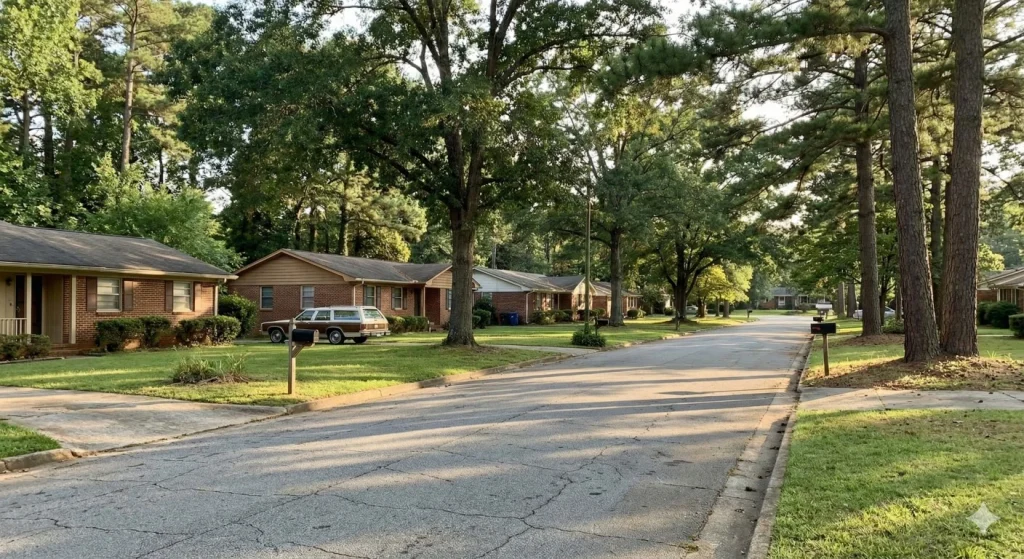
Before Demogorgons, before Vecna, before the Upside Down tore Hawkins apart – there was just a quiet town, flickering lights, and bikes racing through empty streets. That is the magic of Stranger Things. The show made ordinary places feel unsettling: a small-town main street hiding secrets a mall that turns into a battleground a government lab that should never have existed What makes this even more exciting is that Hawkins is not entirely fictional. The town, its labs, schools, and streets were filmed across real locations in Georgia, USA – places fans can still visit today. Walking through these locations feels familiar yet eerie: like Mike and Dustin just rode past like Joyce is about to sprint across the street like something strange is watching from the shadows The Tarzan Way will take you through the real Stranger Things filming locations in Georgia, starting with the places that built Hawkins from the ground up. If you have ever wanted to step inside the world of the Party – this is where it begins. IN SHORT Hawkins is real – and it lives across multiple towns in Georgia, USA Downtown Hawkins was filmed in Jackson, Georgia, where storefronts doubled as Melvald’s, Hawk Cinema, and RadioShack Starcourt Mall scenes were filmed at the now-famous Gwinnett Place Mall in Duluth The eerie Hawkins National Laboratory exterior is actually Emory University’s Briarcliff Campus in Atlanta Most locations are still accessible today, though some require respectful viewing from outside These spots are perfect for fans interested in Stranger Things real-life places, pop-culture travel, and Hawkins-style nostalgia Ideal to combine with haunted travel experiences or Stranger Things-inspired adventures for a deeper, more immersive trip Hawkins Comes to Life in Georgia, USA Georgia became the backbone of Stranger Things, offering quiet towns, retro architecture, and atmospheric backdrops that perfectly captured the essence of Hawkins. Here are the most iconic filming locations every fan should know. 1. Downtown Hawkins Real-Life Location: Jackson, Georgia This is the heart of Hawkins – the place where Joyce rushes between errands, where Mike and the gang wander aimlessly, and where normal life pretends nothing strange is happening. What you’ll recognize immediately: Melvald’s General Store (Joyce Byers’ workplace) Hawk Cinema RadioShack The town square and surrounding storefronts Jackson’s downtown streets were transformed into a believable 1980s Midwest town, and remarkably, much of it still looks the same today. Why fans love it: Strong small-town America vibe Easy to walk and photograph Several businesses lean into their Hawkins legacy Visitor tips: Many shops sell Stranger Things-themed merchandise Some storefronts retain Hawkins-style signage Visit during weekdays for fewer crowds and better photos Standing here feels like stepping into Season 1 – before the Demogorgon, before the lab secrets, when Hawkins was still pretending to be normal. 2. Starcourt Mall Real-Life Location: Gwinnett Place Mall, Duluth, Georgia Season 3 turned a shopping mall into one of the most iconic battlegrounds in modern TV history. Scoops Ahoy, neon lights, Russian tunnels beneath the food court – Starcourt Mall became central to the Stranger Things universe. What was filmed here: Exterior mall shots Interior mall scenes (including Scoops Ahoy set builds) Parking lot sequences What it’s like now: The mall is partially closed Interior sets have been removed The exterior remains instantly recognizable Why it still matters: One of the most photographed Stranger Things locations Perfect example of retro Americana meeting sci-fi horror Feels especially eerie due to the mall’s semi-abandoned state For fans who enjoy abandoned spaces and unsettling atmospheres, this location pairs naturally with darker travel themes often explored in haunted and abandoned place guides. 3. Hawkins National Laboratory Real-Life Location: Emory University’s Briarcliff Campus, Atlanta, Georgia If any location truly defines Stranger Things, it is Hawkins Lab – the epicenter of secret experiments, government cover-ups, and Eleven’s traumatic past. What you’ll see: The brutalist exterior of the former Georgia Mental Health Institute Long concrete walls and institutional architecture The instantly recognizable lab façade Important visitor information: The building is not open to the public It is gated and actively monitored Photos can be taken only from outside the entrance Why it feels so powerful: The structure perfectly matches the cold, secretive energy of the lab Knowing its real-life history adds an extra layer of unease One of the most authentic “Hawkins” experiences you can have Standing outside Hawkins Lab is a reminder that Stranger Things thrives not just on monsters – but on fear of what humans are capable of when no one is watching. Why Georgia Feels Like Hawkins Georgia was not just a filming convenience – it was a storytelling tool. Quiet towns that feel frozen in time Architecture that fits 1980s America naturally Forests, labs, and suburbs within close distance A visual tone that blends nostalgia with dread It is this balance that makes Georgia such fertile ground for both Stranger Things filming locations and broader cinematic travel experiences. Besides these there are Haunted Places Around the World That Feel Straight Out of Stranger Things The Neighborhoods of Hawkins Some of the most powerful moments in Stranger Things do not happen in laboratories or alternate dimensions. They happen at dinner tables, on front lawns, and in quiet suburban streets where nothing should feel wrong – but does. These real-life neighborhoods in Georgia gave Hawkins its emotional core. The Byers, Wheeler, Sinclair & Henderson Homes Real-Life Location: East Point, Georgia This is where Hawkins truly feels alive. The residential streets of East Point doubled as the homes of the Party – Mike, Will, Lucas, Dustin – and became the backdrop for friendship, fear, and growing up under supernatural pressure. What you’ll recognize immediately: The Byers House, where Christmas lights spelled terror and Joyce refused to stop believing The Wheeler House, symbolizing safety, routine, and 80s suburbia Nearby homes used for the Sinclair and Henderson families, all within close proximity Walking these streets feels strangely intimate: Quiet roads Tree-lined sidewalks Houses that look completely normal – until you remember what happened inside them
Stranger Things-Inspired Adventures You Must Experience at Least Once
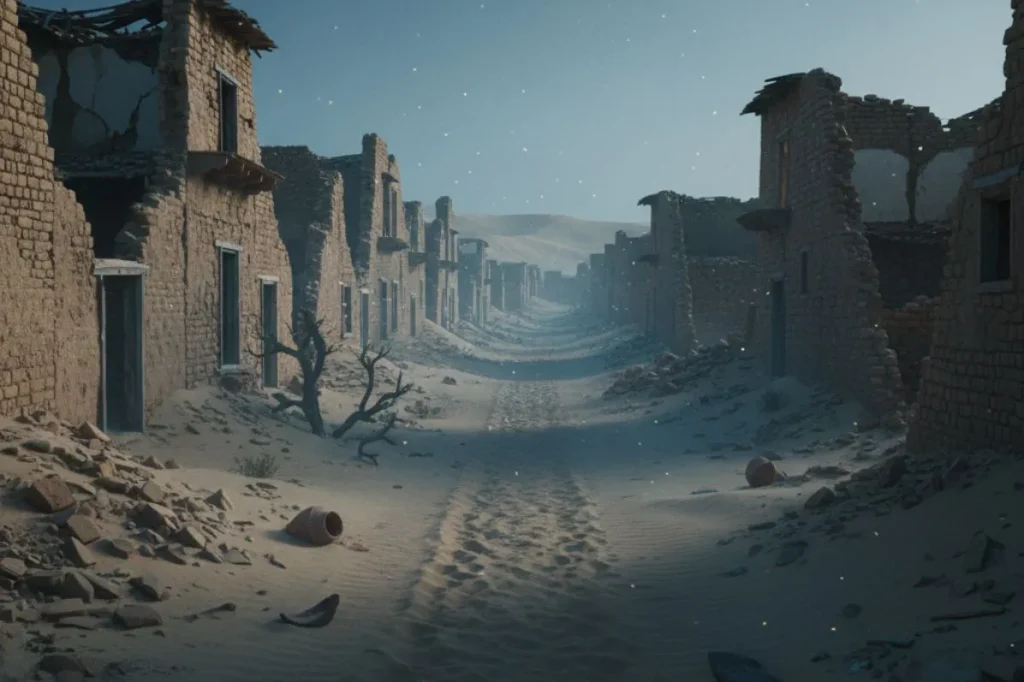
Many feel the same way as you after seeing Stranger Things: “I’d like to go there!” Since Eleven lifted the van (and subsequently the Demogorgon) out of Hawkins Middle School, people across the globe have searched for real locations that evoke a similar creepy feeling (i.e. the foggy forest/abandoned towns/streetlamps), where silence can be deafening. The increase in dark tourism and adrenaline-seeking activities related to Stranger Things has resulted in the next generation of experiential travel for many. People no longer want traditional sightseeing. They are seeking suspense, mystery, and adrenaline-producing experiences including landscapes that are one-dimensional near the Upside Down. From shadowy forests reminiscent of Will Byers’ disappearance to abandoned locations that look like Hawkins Lab, this blog uncovers the best destinations worldwide that promise a thrill only true Stranger Things fans will understand. IN SHORT Before diving in, here’s what this part covers: The world’s most atmospheric forests that feel like portals to the Upside Down. Abandoned towns and derelict industrial zones that recreate the eerie tension of Hawkins Lab. Real Stranger Things filming locations you can actually visit, from Hawkins Middle School to Starcourt Mall. Perfect global choices for fans seeking supernatural adventure destinations, creepy adventure activities, and Hawkins-style adventures. Global Stranger Things – Inspired Adventures These destinations blend eerie landscapes, supernatural legends, abandoned architecture, and suspenseful energy-perfect for fans craving real-life Hawkins vibes. Mystery Forest Trekking Adventures That Feel Like the Upside Down Some forests are just forests. Others feel like portals-silent, fog-wrapped, and unpredictable. If the thought of walking where a Dimensional Rift could open excites you, these forests belong on your adventure list. Aokigahara Forest, Japan Located at the base of Mount Fuji, Aokigahara is one of the world’s most mysterious forests. Dense trees block sunlight, creating a near-dark atmosphere even during daylight. Compasses reportedly malfunction due to the volcanic soil-similar to how magnetic disturbances appear near the Upside Down. Known for eerie silence and maze-like paths. Hoia Baciu Forest, Romania Often called the “Bermuda Triangle of Transylvania,” Hoia Baciu is famous for paranormal phenomena. Visitors report strange lights and unexplained shadows. Perfect setting for supernatural adventure destinations. The circular clearing resembles the mysterious scorch marks and portals Eleven often interacts with. Black Forest, Germany A fairytale forest by day, a haunting maze by night. Mist-cloaked trails Whispering winds Old folklore of ghostly figures This forest channels the same chilling atmosphere that surrounded Will’s disappearance in Season 1. Also explore: Top 10 Haunted Forests in the World for Brave Adventurers. Why this feels like Stranger Things Fog density makes visibility drop-like entering a sensory deprivation zone. Trees twist into unnatural silhouettes, nodding to the Mind Flayer’s web-like tendrils. Ideal for night trekking for thrill seekers craving an atmospheric, cinematic adventure Abandoned Locations Adventure Tours for Real-Life Hawkins Vibes If your favorite scenes involve the Hawkins Lab, Creel House basement, or the Russian base corridors, these abandoned destinations will send chills down your spine-in the best possible way. Hashima Island, Japan Once a bustling coal mining town, now a completely deserted island fortress. Concrete buildings collapsing into the sea Narrow corridors eerily similar to the Russian base arc Feels like a whole city evaporated overnight Pripyat (Chernobyl), Ukraine The world’s most iconic abandoned town. Kindergarten toys left scattered Broken Ferris wheel looming over an empty plaza Silent apartments frozen in 1986 This mirrors the unsettling emptiness of Hawkins in Season 2 when the Mind Flayer took control. Bodie Ghost Town, California, USA A preserved Wild West town caught in a state of “arrested decay.” Dusty saloons Abandoned tool shops Homes filled with belongings left in place The atmosphere feels similar to wandering around Hawkins after Vecna’s attacks-silent, lifeless, and charged with tension. Stranger Things parallels Rusted machinery evokes the industrial chaos of Hawkins Lab. Echoing hallways mirror the tension of Season 4’s Creel House scenes. Perfect destinations for dark tourism adventures. Explore Real Stranger Things Filming Locations For fans who want to physically step into Hawkins, the real filming locations in the U.S. offer a rewarding and immersive experience. Hawkins Middle School & Hawkins High School – Atlanta, Georgia Yes, these buildings exist-and you can visit them. The courtyard where Mike, Dustin, Lucas, and Will rode their bikes The exact corridors where Demogorgons were heard scratching the walls A must-see for photographers and superfans Starcourt Mall Filming Site The mall lives on-minus the Mind Flayer goo and Russian laser tunnels. Iconic Season 3 battle scenes Retro design preserved in parts Fans often recreate “Scoops Ahoy” moments here Bellwood Quarry A dramatic filming location used in several intense sequences. Steep cliffs and deep waters Featured in multiple suspense scenes Palace Arcade Relive Season 2 nostalgia. Neon lights 80s’-inspired arcade games The setting for Max’s introduction as “Mad Max” Why visit? You step directly into the world where Eleven fought monsters and Hopper cracked mysteries. Locations are well-maintained and easy to access. Ideal for fans who want authentic Stranger Things inspired travel experiences. Extreme & Thrilling Adventure Activities These activities blend danger, mystery, supernatural energy, and pure adrenaline-ideal for adventure tourism for adrenaline lovers and fans who want experiences far more intense than Netflix marathons. Darkness & Depth: Cave Adventures That Feel Like the Tunnels of the Upside Down If Season 2’s sprawling, pulsating tunnel network gave you chills, these caves will feel like stepping into Will Byers’ nightmares. Damp walls, echoing chambers, shifting shadows-everything screams mystery. Waitomo Glowworm Caves, New Zealand An enchanting yet eerie system where the ceilings glow with thousands of blue luminescent creatures. Black-water rafting through tight caverns Silent chambers illuminated only by glowworms Feels like a bioluminescent Upside Down with magical spores floating overhead Postojna Cave, Slovenia One of Europe’s most dramatic cave systems. Underground train ride Massive stalactite formations Labyrinthine tunnels that feel like Vecna’s lair The deep resonance in these caverns resembles the unsettling echo effects during Will’s possession scenes. Meghalaya Caves, India India’s adventure capital for cave exploration-dark, wet, rugged, and unpredictable. Krem Mawmluh (five river passages converge)
Haunted Places in India That Give You the Stranger Things Vibe
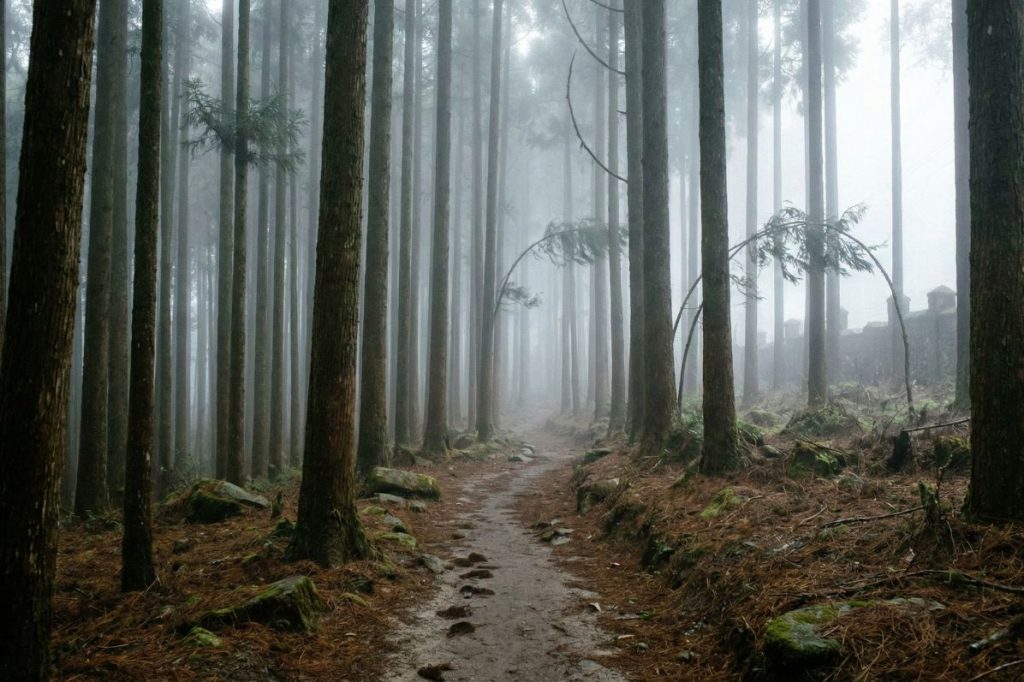
Introduction Ever since Stranger Things released, the world has been chasing that Hawkins vibe – foggy streets, flickering lights, dense forests, and the feel that something might crawl out of the shadows at any moment. This series provided viewers with much more than just Demogorgons, telekinesis and psychic powers from Eleven, and Mind Flayers-it also established a whole new aesthetic. The combination of nostalgia for small-town America, 1980s mystery, supernatural danger, and the friendship connections found in the midst of chaotic experiences shaped our perspectives on traveling to spooky locations. It is not just the monsters that hooked viewers – it is the atmosphere. The empty roads that feel too quiet. The woods that seem to breathe. The abandoned structures that whisper stories. That classic Stranger Things silence that somehow feels louder than noise. All over the globe, including in India, there are real locations where you can experience those intense feelings that draw fans to the show, such as: the intrigue that makes Dustin’s curiosity spike the thrill that would make Steve grab his nail-bat the uneasy quiet Eleven senses before something strange happens the wonder that turns every mystery into a Mike-and-Will adventure These eerie landscapes offer more than stunning visuals; they also provide a powerful source of nostalgia, suspense, and unbridled adventure that can transport fans back into the world of Stranger Things. The same combination of emotions that made the show so successful is present in off-the-beaten-path locations across the globe, whether it’s a ghost village deep within the forest, a haunted woodlands, or deserted industrial buildings. IN SHORT If you love Stranger Things, there are real places around the world-and in India-that evoke the same spooky, cinematic energy. These locations share: Abandoned or forgotten landscapes Disturbing legends or paranormal claims Dense forests, fog, tunnels, and empty structures Vibes similar to Hawkins Lab, the Upside Down, and the show’s supernatural setting In this part of the guide, you will explore: What makes a place feel like Stranger Things Kuldhara Village – one of India’s most mysterious abandoned settlements Lambi Dehar Mines – an eerie hillside location resembling Hawkins Lab’s secrecy Each destination includes traveller insights, visual cues, and reasons why they mirror the show’s atmosphere. What Makes a Place Feel Like Stranger Things? A real-world place feels like Stranger Things when it carries the same blend of mystery, subtle horror, and “something is not right here” energy. It is not only about abandoned structures-it is about ambience. Key Elements That Create the Stranger Things Vibe Isolation and silence – Small towns, empty villages, or remote hills that instantly feel unsettling. Abandoned architecture – Mines, derelict buildings, ghost villages, or underground areas. Fog, forests, and dim lighting – Natural elements that create the perfect eerie canvas. Folklore and legends – Stories of disappearances, curses, hauntings, or unexplained phenomena. Cold, industrial energy – Structures that resemble Hawkins National Laboratory: secretive, abandoned, or heavily guarded in the past. “Upside Down” resemblance – Overgrown vegetation, twisted pathways, or places where nature feels unnatural. Emotional Triggers Similar to the Show A sense of being watched Sudden quietness Atmospheric tension Visual cues like cracked walls, rusting machinery, or unlit corridors Why Travellers Love These Places They offer cinematic adventure beyond traditional tourism. They appeal to fans of dark tourism, paranormal experiences, and offbeat travel. They create opportunities for incredible photo shoots and storytelling. Stranger Things-like locations combine nostalgia, mystery, and adrenaline-making them perfect for explorers seeking something beyond the typical “beautiful place”. 1. Kuldhara Village, Rajasthan – The Real-Life Upside Down Kuldhara is often described as one of India’s eeriest abandoned sites, and for good reason. Walking through its deserted lanes feels like stepping into the Upside Down-silent, frozen in time, and charged with an invisible tension. Why It Feels Like Stranger Things Abandoned overnight – Just like Hawkins’ sudden chaos, the entire Paliwal Brahmin community vanished in one night. Desolate architecture – Crumbling havelis, broken walls, and empty pathways create a post-apocalyptic aesthetic. Absolute silence – The village remains untouched, giving it a haunting “another dimension” vibe. Local myths – Residents believe the village is cursed, adding a supernatural layer similar to Hawkins’ whispers. Visual Similarities Vast barren surroundings resembling the Upside Down’s empty landscapes Lack of human activity Wind sweeping through narrow lanes, creating eerie sound patterns Ideal For Fans of mystery and dark tourism Photographers looking for cinematic, dystopian frames Travellers exploring haunted or abandoned destinations Kuldhara’s stillness and visuals make it one of the closest real-life parallels to Stranger Things’s most terrifying dimension. 2. Lambi Dehar Mines, Mussoorie – The Hawkins Lab Energy Located in the hills of Mussoorie, the abandoned Lambi Dehar Mines carry an unsettling mix of industrial silence and paranormal mystery-very similar to the dark aura surrounding Hawkins National Laboratory. Why It Feels Like Hawkins Lab Industrial ruins – Old mining tunnels, rusted machinery, and derelict structures create a sinister scientific-facility vibe. History of tragedy – Thousands of miners reportedly died due to unsafe working conditions, embedding a sense of sorrow and disturbance. Restricted areas – Some parts remain inaccessible, enhancing the feeling of secrecy. Frequent paranormal claims – Locals report strange noises, screams, and unexplained shadows after dark. Atmospheric Elements Thick forests surrounding the site Fog rolling down the hills, reducing visibility A strange, metallic smell around certain tunnels Complete absence of daily human movement Ideal For Adventure travellers Dark tourism enthusiasts Fans looking to experience the unsettling Hawkins Lab aesthetic firsthand Lambi Dehar Mines blends industrial dread, paranormal rumours, and natural eeriness-making it feel straight out of a Stranger Things subplot. 3. Dow Hill, Kurseong – Mirkwood Forest in India Dow Hill in Kurseong is one of India’s most unsettling forest regions, known for phantom sightings, unexplained footsteps, and a deep silence that feels engineered. With mist-covered pine trees, narrow trails, and a chilling emptiness, it strongly resembles the “Mirkwood” forest sequences in Stranger Things-especially the scenes where Will Byers disappears. Why It Feels Like Stranger Things Perpetual fog creates low visibility
Haunted Places Around the World That Feel Straight Out of Stranger Things
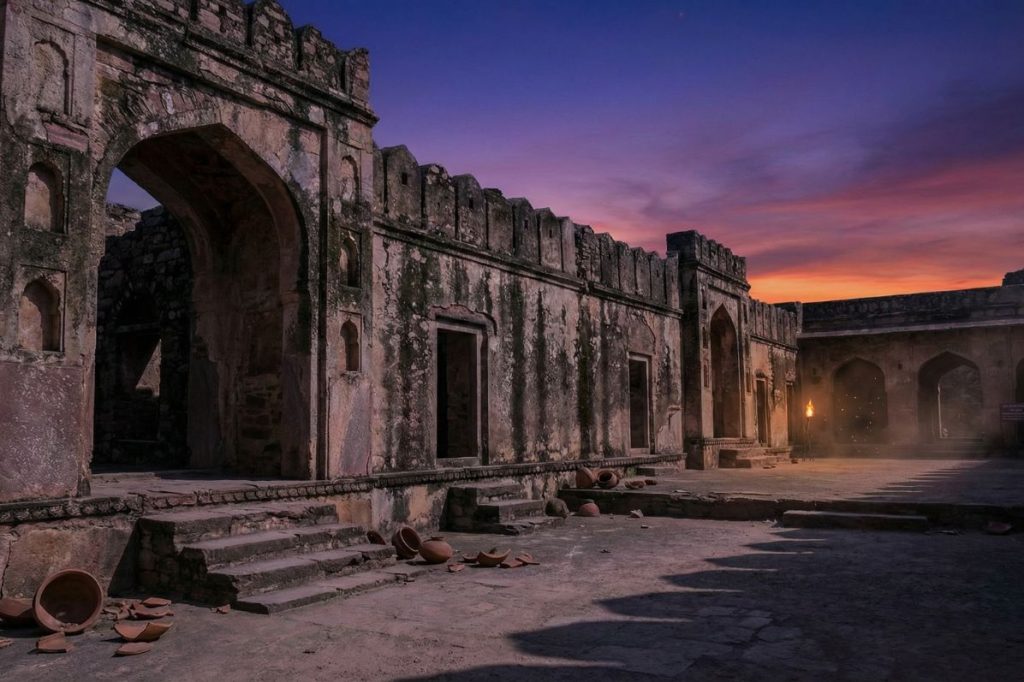
The allure of the unknown is magnetic. It draws you in unquestionably, before you have time to develop a reason for being drawn to it. As an example, think about what allows a ghost town to be shrouded in silence, or a forest where children seemingly vanish with no explanation. Unknown places creating unknown experiences are so appealing to today’s travelers who want much more than just to take pretty pictures of the environment. Today’s tourists, especially with regards to ‘dark tourism’, are looking for more emotion and adrenaline than just pretty scenery! Stranger Things reminded us how much of what we all see is only half of the true story. There is an “upside-down” world out there, both literally and metaphorically: abandoned labs that have been untouched for decades, haunted islands full of old memories, and towns that feel like they have stopped happening altogether (like Hawkins). Standing somewhere eerily remote yet so familiar (like Hawkins), you would encounter the same sorts of phenomena as depicted in the show-thick, grey fog, buzzing lights, the sensation of feet following behind you, and absolutely no one around. These could very possibly be portals to an unknown realm. This guide reveals 7 haunted locations across the world that feel straight out of Stranger Things – places with chilling legends, terrifying histories, and experiences powerful enough to bend reality. Get ready to step just a little closer to the dark side. And if you’re planning a dark-themed adventure, smart tools like The Tarzan Way’s AI-powered travel planning can help curate safe routes, guided tours, and budget-friendly stay options designed for adventure lovers. In Short 7 most haunted places around the world inspired by Stranger Things themes Perfect for paranormal lovers, thrill seekers & dark tourism explorers Includes haunted forests, ghost towns, cursed islands, abandoned hotels & asylums 1. Hoia Baciu Forest, Romania – “The Real-Life Upside Down” Often called the most haunted forest in the world, Hoia Baciu in Transylvania has long been associated with paranormal sightings, mysterious disappearances, and unexplained electromagnetic disturbances. Travelers report sudden nausea, disorientation, malfunctioning compasses, and strange lights floating among the trees-eerily similar to the supernatural energy fields in Stranger Things. Why it feels like Stranger Things A circular clearing where nothing grows – similar to dimensional rift portals Documented UFO sightings and ghost photographs Locals warn visitors from entering after dark How to Visit Closest city: Cluj-Napoca (Romania) Best season: September–November for foggy ambience Recommended: guided night investigation tours For more eerie natural locations and forest legends, explore Top 10 Haunted Forests in the World for Brave Adventurers – perfect read before planning your trip. 2. Pripyat & Chernobyl Exclusion Zone, Ukraine – Frozen in Time Once a thriving Soviet town, Pripyat was evacuated within hours after the 1986 Chernobyl nuclear disaster. Today, a ghost city remains-abandoned schools, fairgrounds, hospitals, and apartments still filled with personal belongings. The silence feels unbearably heavy, like Hawkins after the Demogorgon strikes. Stranger Things parallels Government experimentation and secrecy Toxic abandoned laboratories & restricted zones Nature reclaiming destroyed human spaces Travel Information Access only via licensed tour agencies Full-day & 2-day guided photography tours available Carry protective clothing & follow safety instructions 3. Aokigahara Forest, Japan – The Sea of Trees Resting on the slopes of Mount Fuji, Aokigahara is infamous for being one of the world’s most tragic and spiritually heavy forests. Dense trees swallow sound, causing almost complete silence-creating a surreal, oppressive feeling. Why it feels like Stranger Things Disorienting paths & magnetic soil that distorts phone signals Rumored spirit presence & abandoned belongings scattered across paths Locals say compasses spin wildly Travel Tips Stick to marked trails only Visit early morning or during guided tours 4. Bhangarh Fort, India – “The Most Haunted Place in India” Located in Rajasthan, Bhangarh Fort is infamous for its Archaeological Survey of India notice prohibiting entry after sunset-no one is allowed inside once darkness falls. Legends speak of a cursed town, mass disappearance, and a sorcerer whose broken spell still haunts the abandoned palace ruins. Why it feels like Stranger Things A cursed town suddenly collapsed without explanation (like Hawkins after a major attack) Locals report screams, shadows, and footsteps after dark Energy shifts and oppressive silence in abandoned markets and temples How to Visit Nearest airport: Jaipur (85 km) Visiting Hours: 6 AM–6 PM only Best time: October–February (winter for pleasant weather) Travel Tip: Hire licensed guide-stories and locations become far more powerful with guided storytelling. Interested in India’s ghost road legends? Check out ? Spine-Chilling Road Trips: India’s Most Haunted Highways 5. Island of the Dolls, Mexico – A Silent Island of Staring Eyes Deep inside Mexico City’s Xochimilco canals lies Isla de las Muñecas, where thousands of old broken dolls hang from trees-eyes, limbs, and heads arranged like a ritual offering. Created by a hermit who believed dolls could protect him from spirits, the island now feels like an abandoned experiment gone wrong. Stranger Things Parallels Dolls turning heads & whispering sounds reported by visitors Unsettling silence except for cracking branches Feels like an abandoned laboratory world in the Upside Down Travel Details Access via boat ride from Embarcadero Cuemanco Guided haunted canal tours available at night Bring warm clothes & avoid carrying valuables 6. Centralia Ghost Town, USA – The Ever-Burning Hellfire Town Once a thriving mining community, Centralia became uninhabitable after a coal mine fire ignited underground in 1962 and continues burning to this day. Smoke vents from cracks in the ground, paint melts off structures, and the deserted roads echo with emptiness. Why it feels like Stranger Things Toxic environment similar to Vecna’s decaying dimension Empty buildings frozen in time Fog, smoke & unnatural silence Visitor Guidance Official access is partially restricted Most travelers explore the outer remains & Graffiti Highway Do not step on steaming cracks-ground is unstable 7. Hashima Island, Japan – Ghost Industrial City Known as Battleship Island, Hashima was once one of the world’s most densely populated places. After coal mining
Konark Festival dates, ticket info and travel guide
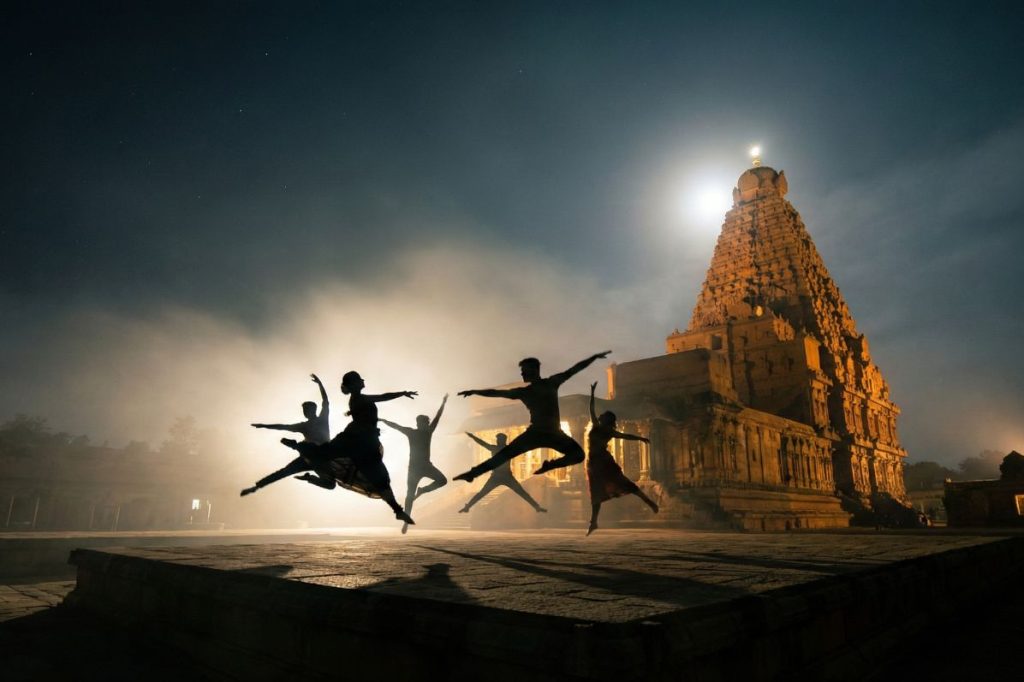
The wintertime is cold and the ancient stone walls are illuminated by the silver light of the moon. The cold winter night is filled with the sound of the rhythmic beat of thousands of Ghungroos ringing out in the night. Spotlights illuminate the magnificent Sun Temple in Konark while the dancers walk out onto the open stage, moving with the grace of gods and goddesses, sharing stories through their dancing that have been passed down for centuries. For just a moment in time, the world stands still. the audience, surrounded by the sounds of their fellow festival guests, is captivated by one of India’s most beautiful cultural evenings: The Konark Dance Festival. Travelers around the world dream of experiencing the annual celebration of classical dance and each year thousands of them like to travel to this incredible event. However, many soon realize that there is much confusion about the details involved in making these arrangements. When to purchase tickets, what are the exact dates, how to travel to Konark, where to find accommodation, do you need tickets ahead of time, and much more! A first-time visitor may be feeling overwhelmed with the planning and preparation for this remarkable festival. Key Takeaways Konark Dance Festival 2025 is expected to be held from 1st–5th December at the open-air stage near the Konark Sun Temple, Odisha. Entry is free for general seating, but premium passes & VIP access require advance booking. Best time to reach the venue: 5:00 PM for smooth entry & great seats. Stay in Konark for convenience and early access; stay in Puri for a beach holiday + festival combination. Ideal itinerary includes Sun Temple, Chandrabhaga Beach, Puri Jagannath Temple & Raghurajpur Artist Village. December weather is pleasant (16°C–28°C) — light jackets recommended for evenings. Best photography moments: Chandrabhaga sunrise, illuminated Sun Temple backdrop during performances, and blue-hour stage shots. Cultural etiquette: Respect performers, avoid flash photography & arrive early for security checks. Perfect festival pairing options: Rann Utsav, Christmas travel and New Year celebrations in India & abroad. Also explore other spectacular festivals this winter: Best International Festivals to Attend in December and January What is the Konark Dance Festival? The Konark Dance Festival is recognized as one of India’s finest classical dance festivals, exhibiting the diversity and beauty of the heritage of Indian classical dance through presentations by various eminent dancers from across the globe. It was established in 1986 to promote and protect the heritage and architecture of the UNESCO World Heritage Site – The Sun Temple of Konark, and to help preserve the classical dance traditions for future generations. The festival occurs once a year during early December and offers a breathtaking setting that showcases some of the finest artists presenting their various styles of Dance such as Odissi, Bharatanatyam, Kathak, Kuchipudi, Manipuri, and Mohiniyattam During the event’s duration, the festival creates a unique emotional atmosphere that will leave an indelible mark on the audience. The combination of the flame from the pyres, the sculptures that are illuminated, and the cool breeze creates an atmosphere, unlike anything else found in all of India. Why is it so special? Celebrates India’s classical dance heritage in its purest form Global participation from renowned artists and academies A breathtaking fusion of art, culture, architecture, and nature Hosted beside one of the world’s greatest architectural marvels A platform that preserves endangered traditional storytelling techniques Festival Vision To create a cultural bridge connecting traditional Indian performing arts with modern audiences while showcasing Odisha as a global cultural destination. Konark Dance Festival 2025 – Dates, Timings & Schedule The Konark Dance Festival 2025 is expected to take place from 1–5 December 2025 (final dates announced by Odisha Tourism closer to the event). Performances are held every evening in the open-air auditorium near the Sun Temple. Daily Timings Entry begins: 5:30 PM Opening ceremony: 6:00 PM Main performances: 6:30 PM – 9:00 PM Prime Viewing Days Opening night – grand showcase with special lighting and traditional rituals Closing night – combined ensemble performances & ceremonial finale Full Moon Night Experience If the festival coincides with Purnima, audiences witness a rare visual: moonlit temple walls glowing behind dancers – an unforgettable photography moment. Seating Categories Overview Category Experience General Seating Open-air seats, good stage visibility Premium/Donor Seats Closer to stage, enhanced comfort VIP Section Invitation / dignitaries / press access Location & How to Reach Konark The festival is held at the Open-Air Auditorium near Sun Temple in Konark, Odisha, by the Chandrabhaga seaside. Nearest Major Cities City Distance Travel Time Puri 35 km 1–1.5 hours Bhubaneswar 65 km 1.5–2 hours By Air Nearest Airport: Biju Patnaik International Airport (BBI), Bhubaneswar Regular flights available from major Indian cities (Delhi, Mumbai, Bengaluru, Kolkata, Hyderabad) By Train Nearest railway station: Puri (PURI) Well-connected to metro cities & tourism circuits By Road Frequent government and private buses between Bhubaneswar–Konark–Puri Taxi & rental bike options available Scenic coastal drive through Marine Drive Road Konark Dance Festival Tickets & Booking Guide If you plan to attend the Konark Dance Festival 2025, it’s best to secure your seats early-especially if you’re visiting during opening or closing nights. While entry to the event is free for general seating, passes are required for controlled access and premium categories. How to Book Tickets Tickets and passes are generally available through: Official Odisha Tourism website (announced closer to event dates) On-ground booking counters near the venue and tourism offices Cultural department / invite-only access for VIP seating Tip: Premium and donor seats fill fastest – especially for photography and media professionals. Entry Pass Categories Category Details Ideal For General Pass Free seating, first-come basis Students, locals, casual visitors Premium Pass Reserved seating closer to stage Travelers, photographers Donor / VIP Pass Exclusive zone & best views Delegates, dignitaries Press Pass Requires proof, must apply earlier Media & bloggers Approximate Ticket Price Range Pass Type Price (approx.) General Entry Free Premium Seating ₹300–₹800 per person per day VIP Pass Invitation-only Note: Pricing varies each
Personalized Travel with AI: How Smart Systems Understand What Kind of Traveler You Are

Consider this scenario: you just got back from your last vacation and all of your planning is done – except for picking out the best hotels, booking your flight (one with multiple layovers or a direct one) and trying to put all of your sites into only three days. Everyone has gone through this before when planning a trip. “Am I making the right choices?” “What if I miss something better?” Planning a trip today can be very overwhelming, take a long time, and wear you out emotionally. You could spend weeks researching and not feel confident in what you have planned. With AI personalized travel, however, your experience is changing. AI travel recommendations provide you with customized itineraries that are tailored specifically to who you are as a traveller (your speed, preferences, interests, financial capabilities, and emotions). With a smart trip planner, you will be able to turn hours of planning into minutes of possible, and create itineraries that match your own travel personality perfectly. Many modern platforms, including The Tarzan Way’s AI travel planner, are making meaningful and tailored travel easier than ever-quietly working behind the scenes to curate experiences, not checklists. Key Takeaways Traditional travel planning is overwhelming and time-heavy. AI personalized travel customizes itineraries based on traveler personality & behavior. Smart systems save time, reduce decision stress, and help choose better options. Helps create meaningful, experience-first travel-not rushed sightseeing. What is AI Personalized Travel? AI personalized travel uses artificial intelligence and machine learning to understand traveler behavior and create customized itineraries based on individual interests, budget, and preferences. Instead of forcing every traveler into a standard template, AI builds a plan that fits you-the way a local friend would. Why personalization matters today Travelers today don’t want copy-paste itineraries or touristy checklists. People want: Unique experiences, not generic suggestions Efficient planning without hours of research Comfort & emotional connection Smarter money decisions Trips aligned with personal identity AI makes travel more intuitive by learning from real patterns: what kind of places you like, what pace you enjoy, whether you prefer food markets or fine dining, adventure or relaxation, sunrise hikes or nightlife. How AI changes travel decision-making Instead of searching endlessly on Google and comparing 17 tabs of content: AI scans real-time flight and hotel data Filters experiences based on your style Organizes an itinerary optimized by time, distance & cost Suggests alternatives instantly if weather or scheduling changes Learns from your choices and feedback for future trips For example: If you always add food tours to your plan, AI may recommend street-food or chef-tasting experiences. If you pick museums and heritage sites over malls, AI prioritizes cultural routes. If you travel with children, AI chooses kid-friendly stays & short travel distances. This turns passive suggestions into intelligent, customized guidance. Related read: How to Use an AI Chatbot to Plan Your Trip: A Complete Beginner’s Guide How AI Learns Your Travel Style A smart trip planner or AI travel assistant understands how different travelers make decisions. It learns through patterns captured from: Searches and saved destinations Past trips and bookings Preferred locations & activities Reviews you interact with Budget ranges & hotel categories Travel pace (slow vs. packed itineraries) Behavior patterns AI observes Preference Type Example Behaviors AI Analyzes Budget Chooses hostels or 3-star hotels, lowest flight cost Adventure level Searches trekking, paragliding, desert safaris Cultural depth Heritage sites, museums, craft villages Luxury comfort Spa resorts, private tours, fine dining Food interests Local cuisine tours or fine dining Photography Sunrise spots, landscapes, light conditions How Machine Learning Works (simple explanation) AI systems track your choices across multiple data points. Each interaction becomes part of a learning model-predicting what kind of places you’re likely to enjoy and refining recommendations over time. Emotional Intelligence in Travel AI Modern travel AI doesn’t just understand facts-it tries to understand feelings: Suggests relaxing locations if you’re traveling after a stressful period Avoids physically intense days for elderly or family travel Recommends social or solo-friendly activities depending on mood Learns what excites you most based on your reactions This is where travel becomes meaningful, not mechanical. How AI Creates Personalized Itineraries A major advantage of an AI personalized travel planner is its ability to build itineraries that feel tailor-made instead of copy-paste templates. Instead of providing a rigid schedule, AI designs a trip that adjusts to your time, budget, preferences, travel pace, and real-time changes. How It Works AI reads and learns from multiple data layers simultaneously: Your travel style (adventure, culture, luxury, slow travel, family travel, budget) Real-time flight and hotel pricing Weather forecasts & seasonal conditions Local events & activity availability Distance & time optimization between attractions Food preferences, accessibility requirements, mobility needs Past trip behavior & feedback Real-Time Travel Data Integration AI continuously monitors: Flight price drops or sudden increases Hotel availability changes Local festivals or crowd density on certain dates Weather alerts (heatwave, rain, snow conditions, storm warnings) Traffic and route adjustments So instead of manually recalculating a whole plan when something changes, dynamic itinerary AI updates instantly: Example: If heavy rain is predicted in the evening, AI rearranges activities-shifting outdoor sightseeing to morning and indoor museums to later. Personal Matching Algorithms AI compares your preferences with millions of travel profiles, finding patterns like: People who love trekking also enjoy sunrise photography points Foodies usually value street markets & local eating culture Nightlife travelers prefer late-start itineraries Spiritual or wellness travelers prefer calm slow mornings This behavioral clustering allows AI to predict which experiences you’ll actually enjoy-not random recommendations. Budget, Time & Convenience Optimization Instead of trial-and-error calculations, AI automatically finds: Best travel route with minimum travel fatigue Activities grouped by nearby locations to avoid long commuting Hotels closer to convenience spots like metro or beaches Meals & breaks spaced naturally in the itinerary It basically thinks like an expert trip designer-balancing time, money, and experience quality. This is where customized trip planning with AI becomes more powerful than manual research. Examples of AI-Curated Trip Styles Every
Rann Utsav 2025-26: Dates, Tickets & First-Time Visitor’s Travel Guide
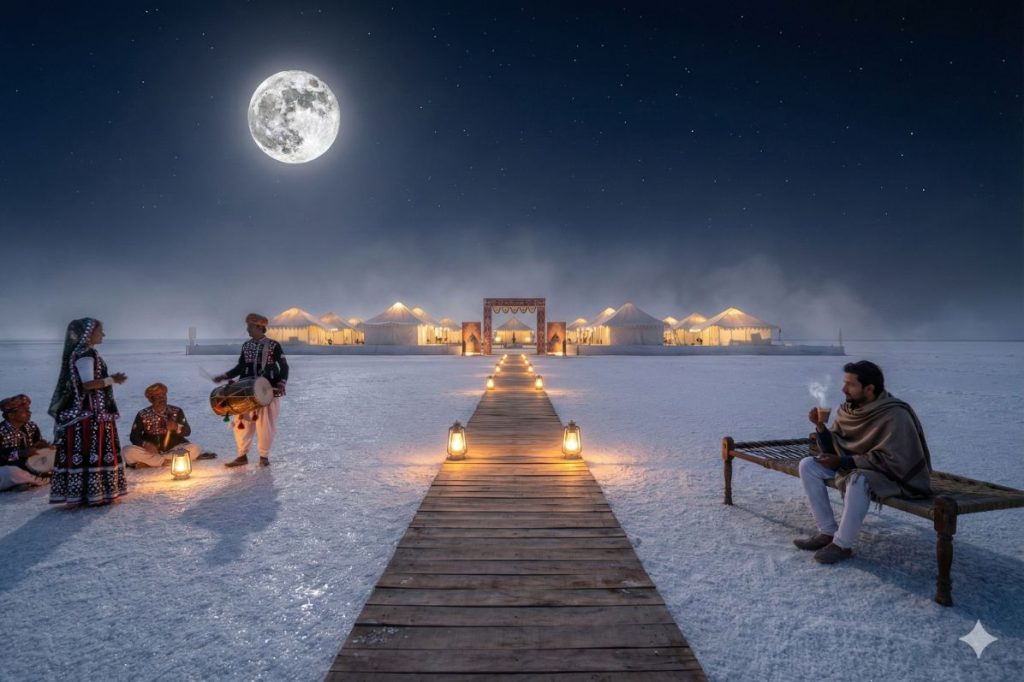
Introduction Rann Utsav is truly a magical festival. The festival takes place in a remote desert area known as Rann of Kutch. The desert has very few inhabitants and is home to many ethnic groups. While you stand on a flat, white salt pan looking up at the stars, you hear the sound of traditional folk music playing in the background as you drink hot spiced tea called chai from a tent set up beside the tent where artisans sell their wares. You are surrounded by artisans who sell their goods, including colourful clothing and other beautiful handicrafts. You can also smell the delicious, traditional dishes being served at food stalls all around the festival. If this is your first time visiting, this guide will help you with: Official 2025 festival dates & booking tips How to reach the desert and where to stay What the Tent City experience includes Best travel windows, costs, and practical tips In Short – Key Takeaways Festival Period: 23 Oct 2025 to 4 Mar 2026 Best months to visit: November to February – pleasant desert climate & full-moon nights Getting there: Fly or train to Bhuj → 80 km / ~1.5–2 hr road to Dhordo Tent City Why go: White-salt desert under full-moon, cultural shows, folk art & crafts, desert adventure under stars What Is Rann Utsav? Rann Utsav is a winter festival hosted in the Kutch’s Rann region, where there is a large expanse of white salt deserts. When illuminated by the moonlight, this vast desert transforms into a dream-like white scene. During the festival’s existence, it has evolved into a combination of several aspects including nature, culture, adventure, and hospitality. This festival provides an opportunity for travelers who want to do something different than visit beaches or populous areas. What to Expect at Rann Utsav A temporary Tent City at Dhordo offering varied accommodation from simple tents to premium cottages Cultural nights with folk music, traditional dance, local cuisine, and handicraft bazaars showcasing Kutchi art & textiles Desert adventures: camel rides, ATV/buggy rides, paramotoring, night desert safaris, sunrise & sunset visits to the White Desert White-salt plains glowing under full-moon – a surreal photography & stargazing experience For many, Rann Utsav is a chance to experience Gujarat’s heritage, desert beauty, and local hospitality all at once. Rann Utsav 2025 Dates & Schedule The 2025-26 edition of Rann Utsav runs from 23 October 2025 to 4 March 2026. Period What to Expect Late Oct – Early Nov Festival kickoff; moderate crowds; first full-moon nights after monsoon November – February (Peak) Best time – clear skies, comfortable weather, full-moon nights, maximum cultural events & tent occupancy March (early) Festival wind-down; fewer crowds, cooler desert mornings, ideal for budget travelers Best months to visit: November, December, January – when the weather is pleasant, nights are cool, and the desert under moonlight is magical. Pro tip: For a jaw-dropping experience, aim for full-moon nights – the salt desert reflects moonlight beautifully, creating a surreal, dream-like landscape. Location & How to Reach Rann Utsav Where is it Held? The festival is held at Dhordo Tent City, set at the edge of the White Salt Desert in Kutch, Gujarat. How to Reach Mode Details By Air Fly into Bhuj Airport (BHJ) – nearest airstrip to Rann Utsav By Train Reach Bhuj Railway Station, well connected to major cities; then travel by road From Bhuj to Dhordo ~80 km / ~1.5–2 hours by road. Taxi, shuttle or pre-arranged transfer recommended Typical travel cost (road transfer from Bhuj): modest – especially if using shared taxi or shuttle services. If you come via major cities like Ahmedabad, Mumbai or Delhi, you can combine flight/train to Bhuj + road transfer for a smooth journey. Why Rann Utsav Should Be On Your Travel Radar If you’re looking for a travel experience unlike beaches, hills or cities – Rann Utsav offers a magical mix: A salt-desert transformed into a cultural festival under a blanket of stars Rustic tents & ethnic vibes that bring you close to local culture Adventure + calm: desert safaris by day, folk music under moonlight by night Affordable for Indian travellers – budget friendly compared to international trips Whether you’re travelling solo, with family or friends, Rann Utsav gives a slice of surreal beauty, culture, and adventure – all wrapped into one experience. For travellers who enjoy global seasonal festivals, this could be India’s most unique winter escape – something akin to a desert festival crossed with a cultural carnival. Rann Utsav Tent City & Accommodation Guide When you arrive at Rann Utsav, you stay at the well-managed Tent City at Dhordo. Here’s what you need to know about accommodation and tent city booking. Types of Tents & Facilities Rann Utsav tent options range from budget-friendly to premium luxury. Choices include: Tent Type / Class Key Features Non-AC / Basic Tent or Swiss Cottage Simple tent or cottage with fan or basic ventilation, twin beds or single, attached bathroom – budget friendly. Deluxe AC / AC Swiss Cottage Air-conditioned or well-ventilated, attached bathroom, comfortable beds and amenities – mid-range comfort. Premium Tent Bigger space, typically better interiors, AC, front porch – good balance of comfort & value. Super Premium / Luxury / “Darbari / Rajwadi Suite” Highest level comfort: AC, premium furnishings, possibly more space or suite-style amenities for couples or those wanting luxury. All tent-city stays usually include meals, access to cultural evenings & festival-related shows, and proximity to the desert/sunset-point for night desert & full-moon experiences. Tip for selection: If you’re on a budget or travelling solo or as backpackers → choose Non-AC / Deluxe tent. For families, couples or comfort-seekers → Premium or Super Premium tent works best. For travellers after full comfort + extras (AC, privacy, luxury) → go for the luxury suite tent option. Rann Utsav Tickets & Tent City Prices (2025–26) Here’s a breakdown of typical tent-city pricing and inclusions. Actual tariff may vary based on dates (full-moon nights, holidays, demand), so
How to Use an AI Chatbot to Plan Your Trip: A Complete Beginner’s Guide

You sit down to plan your dream vacation – one hour passes, then two… soon your screen is filled with flight comparison tabs, hotel options, travel blogs, and YouTube itineraries.After multiple hours of searching your computer, you do not feel excitement as much as overwhelmed by having too much information thrown at you. Instead of this chaos of information overload, picture using a single solution that can analyze your interests and provide you with the optimal travel plan in just seconds! That’s exactly how AI Chatbot-based Travel Planning works. Why AI travel planning matters: Get instant destination recommendations tailored to your interests Receive smart, day-by-day itineraries in minutes Optimize budgets and travel routes efficiently Make real-time changes without starting from scratch Platforms like The Tarzan Way are leading this revolution. Their AI travel assistant, Kaira, lets travelers plan entire trips conversationally, combining intelligent automation with human-like understanding. For a deeper dive into AI-powered trip planning, check out our guide on how artificial intelligence is changing trip planning. IN SHORT AI chatbots simplify travel planning through conversation Personalized itineraries and smart recommendations save time and effort Kaira by The Tarzan Way is an AI travel assistant designed for Indian travelers Works for beginners as well as experienced planners Helps you plan smarter, optimize budgets, and refine trips instantly What Is an AI Travel Chatbot? AI Travel Chatbots are digital planning assistants, designed to assist the traveler in planning his or her trip as expeditiously as possible. Unlike conventional travel tools, AI travel chatbots leverage AI to comprehend traveller preferences, assess a variety of potential options and provide personalized itineraries via a natural dialogue. Unlike basic question-answer chatbots, AI travel chatbots can discern the traveller’s travel style, group type, pace, budget and hidden preferences. As such, they are akin to having a virtual travel companion who provides insight and recommendations, similar to how an experienced friend would offer suggestions. Key capabilities of AI travel chatbots: Destination suggestions: Based on your interests, budget, and timeline Instant itinerary creation: Detailed day-by-day plans with activities, transport, and meals Route and transport optimization: Helps you find faster, cheaper, or more scenic options Budget management: Adjusts recommendations to keep trips within your desired cost Real-time updates: Alerts for flight price drops, weather changes, festivals, and events For a more comprehensive understanding of how AI is transforming travel, check out our article on AI travel planners and intelligent trip design. Why Travel Planning Needs AI in 2025 The process of planning travel today has become extremely cumbersome. Planning your trip using traditional methods involves hours of research over multiple websites and apps, and manually comparing all flight, hotel, and itinerary options. Even experienced travellers find it difficult to monitor all aspects of travel, including price fluctuations and last-minute cancellations or closures. Through the use of artificial intelligence (AI), the process of planning a trip has been revolutionised by increased speed, intelligence, and flexibility. Instead of being a stressful process, planning a trip with AI has become an easy, smooth transition from fast-paced activity to an exciting new adventure. Benefits of AI travel planning: Saves time: Hours of research are reduced to minutes of conversation Reduces mistakes: Avoids scheduling conflicts, long drives, or overbooked accommodations Increases personalization: Tailored to preferences such as pace, activity type, and comfort level Enhances decision-making: Real-time insights about weather, local events, and travel deals India is seeing a surge in travel tech innovation, with startups like The Tarzan Way leading the AI travel revolution. Their tools combine technology with deep travel expertise, helping travelers plan smarter and more efficiently. For insights on India’s AI travel startups and their impact, read how The Tarzan Way is leading the AI travel revolution. How to Plan Your Trip Using Kaira – Your Personal AI Travel Expert Planning your trip with Kaira is as simple as chatting with a well-travelled friend. You don’t need technical knowledge, forms, or long research hours – just say what you want, and she builds everything instantly. Step 1 – Share Your Trip Details Start with a simple message like: “Plan a 6-day trip to Ladakh in April for 4 friends. Keep drives short and include adventure activities.” Kaira understands your destination, dates, group type, travel style, comfort level, and budget preferences – even if you don’t give structured inputs. She instantly begins crafting the plan based on real traveler needs. Step 2 – Get an Instant Day-by-Day Itinerary Within seconds, Kaira generates a complete itinerary including: Daily activities and sightseeing flow Best route and travel time optimization Hotel & internal travel suggestions Estimated budget across categories Local insights, weather notes & festive events Designed to be practical, efficient, and personalized, not generic templates. Step 3 – Edit & Refine in Real Time (Conversationally) You can modify any part of your itinerary with simple instructions: “Replace this hotel with something premium.” “Add kid-friendly activities.” “Cut the budget by 20%.” “Shift the desert safari to Day 2 instead of Day 3.” Every change updates instantly-no rebuilding from scratch. Step 4 – Get Smart Suggestions & Live Travel Intelligence Kaira actively compares options and recommends what’s best for you, such as: Road trip vs. internal flight based on time & comfort Budget vs. luxury vs. mid-range stay options Alerts for flight price drops and booking advice Weather-based suggestions and safety insights Local events and traffic considerations Avoiding overscheduled days & optimizing routes She thinks ahead so you don’t have to. Step 5 – Finalize, Save & Share When the plan feels perfect, Kaira lets you: Save & download your itinerary Share it with your co-travelers Continue editing later (Coming Soon) Book hotels, activities & transport directly inside WhatsApp/Voice/Instagram For a deeper look at AI-powered intelligent itineraries, see AI-powered travel experiences and smart tourism. Real Prompts You Can Try Using the right prompts ensures the AI understands your requirements and produces the best itinerary. Here are some examples: Destination Discovery: “Suggest budget-friendly international destinations for May.” “Where can I travel in India with snow in



